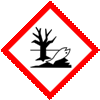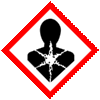| Anmol Chemicals is the pioneer manufacturers of Manganese Sulphate, Pharmaceutical Excipients Food & Flavor chemicals in India. We offer Halal and Kosher Manganese Sulphate made in an ISO9001, ISO22000 (FSSC22000) cGMP and GLP certified facility. Our group has several manufacturing facilities spread across the world, supported by toll manufacturers and representatives in UAE, Europe, USA, China and has several associated manufacturing facilities spread across India. All the Information on Physics, Chemistry, Applications, Uses and Technology on Manufacture of Manganese Sulfate is in these pages. |
| The units have one or more of the certifications like FDA GMP, ISO 9001, ISO 22000, HACCP, REACH, Kosher & Halal |
Manganese Sulphate Sulfate SDS GHS, MSDS Sheet
Specifications of Manganese Sulfate
Manganese Sulfate SDS GHS, MSDS Sheet, Material Safety Data Sheet
Section 1. Product Information
Product Name/Trade Name: Manganese Sulfate
manganese sulfate forms a variety of hydrates: monohydrate, tetrahydrate, pentahydrate, and heptahydrate. The monohydrate is most common.
Synonym: Sulfuric Acid, Manganese salt monohydrate, Manganous Sulphate
Formula: MnSO4-H2O, MnSO4
Chemical Name: Manganese Sulfate Monohydrate
Chemical Formula: MnSO4-H2O
CAS No.: 10034-96-5 monohydrate) 7785-87-7 (anhydrous)
EINECS EC Number: 232-089-9
Recommended usage: Industrial Manufacturing.
Section 2: Hazards Identification
GHS, Globally Harmonized System Classification in accordance with 29 CFR 1910
Classification according to Regulation (EC) No 1272/2008
Specific target organ toxicity, single exposure; Respiratory tract irritation (Category 3)
Specific target organ toxicity - repeated exposure (Category 2)
Acute aquatic toxicity (Category 2)
Labelling according Regulation (EC) No 1272/2008
| GHS Label Elements  Aquatic Toxicity |
GHS Label Elements |
Signal Words: Warning
Hazard statements:
H335: May cause respiratory irritation.
H373: May cause damage to organs through prolonged or repeated exposure.
H401: Toxic to aquatic life.
Precautionary statements:
P260: Do not breathe dust/fume/gas/mist/vapors/spray.
P270: Do not eat, drink or smoke when using this product.
P273: Avoid release to the environment.
P280: Wear protective gloves/protective clothing/eye protection/face protection.
P312: Call a POISON CENTER or doctor/physician if you feel unwell.
P314: Get medical advice/attention if you feel unwell.
P301+P312: IF SWALLOWED: Call a POISON CENTER or doctor/ physician if you feel unwell.
P302+P352: IF ON SKIN: Wash with plenty of soap and water.
P304+P312: IF INHALED: Call a POISON CENTER or doctor/physician if you feel unwell.
P304+P340: IF INHALED: Remove victim to fresh air and keep at rest in a position comfortable for breathing.
P305+P351+P338: IF IN EYES: Rinse cautiously with water for several minutes. Remove contact lenses, if present and easy to do. Continue rinsing.
P501: Dispose of contents/container in accordance with local/regional/national/international regulation.
Classification according to EU Directives 67/548/EEC or 1999/45/EC:
Xn Harmful R48/20/22
N Dangerous for the environment
R51/53
For the full text of the R-phrases mentioned in this Section, see Section 16.
POTENTIAL HEALTH EFFECTS AS PER LITERATURE:
Inhalation: Manganese sulfate or Manganese Sulphate inhalation can cause a flu-like illness (metal Fume fever). This 24-to-48 hour illness is characterized by chills, fever, aching muscles, dryness in the mouth and throat and headache. May irritate the respiratory tract. May increase the incidence of upper respiratory infections (pneumonia). Absorption of inorganic manganese salts through the lungs is poor but may occur in chronic poisoning salts.
Ingestion: May cause abdominal pain and nausea. Although they are poorly absorbed through the intestines, inorganic manganese salts may produce hypoglycemia and decreased calcium blood levels should absorption occur.
Skin Contact: May cause irritation, redness and pain.
Eye Contact: May cause irritation, redness and pain.
Chronic Exposure: Chronic manganese poisoning can result from excessive inhalation and ingestion exposure and involves impairment of the central nervous system. Early symptoms include sluggishness, sleepiness and weakness in the legs. Advanced cases have shown fixed facial expression, emotional disturbances, spastic gait and falling. Illness closely resembles Parkinson’s disease. Kidney effects, blood changes and manganese psychosis also may occur as a result of chronic exposure. Chronic inhalation exposure can cause lung damage.
Aggravation of Pre-existing Conditions: Persons with impaired respiratory function, psychiatric or neurological disturbances and nutrition deficiencies may be more susceptible to the effect of this substance.
Section 3: Composition and Information on Ingredients
Ingredient: Manganese Sulfate Monohydrate or Manganese Sulphate Monohydrate
CAS No.: 10034-96-5; 98-100% by Weight.
EINECS EC Number: 232-089-9
Section 4. First Aid & Procedure
Always get medical attention after the first aid is over.
Ingestion: Induce vomiting immediately as directed by medical personnel. Never give anything by mouth to an unconscious person. Get medical attention.
Skin: Immediately flush skin with plenty of water for at least 15 minutes. Remove and wash contaminated clothing and shoes before reuse. Get medical attention if irritation develops.
Eyes: Immediately flush eyes with plenty of water for 15 minutes, occasionally lifting upper and lower eyelids. Hold eyelids apart during irrigation. Get medical attention.
Inhalation: Remove person to fresh air. If breathing is difficult, give oxygen. If not breathing administer artificial respiration. Get medical attention.
Section 5. Fire Fighting Measures
Flash Point: N/A
Auto ignition Temperature: N/A
Fire/Explosion: Manganese Sulphate is not considered to be a fire and explosion hazard.
Extinguishing Medium: Water fog or other medium appropriate to surrounding fire conditions.
Fire Fighting Instructions: Use suitable protective equipment for surrounding fire. The use of fire extinguishers of the chlorinated hydrocarbon type is not recommended, as toxic products will probably be produced by the decomposition of the extinguishing medium when it come into contact with hot manganese compounds.
Section 6. Spills and Disposals
Pick up and arrange disposal without creating dust. Sweep up and shovel. Keep in suitable, closed containers for disposal. Avoid dust formation. Avoid breathing vapors, mist or gas. Ensure adequate ventilation. Don't touch or walk through this product. Stop leak if safe to do so. Prevent entry into waterways, drains, confined areas. Prevent dust cloud. Use clean non-sparking tools to collect material and place it into loosely covered plastic containers for later disposal.
Section 7. Handling and Storage
Handling: Wash hands before eating. Use with adequate ventilation. Avoid breathing dust. Avoid contacting skin, eyes and clothing. Avoid prolonged or repeated exposure.
Storage: Keep Manganese sulfate in a tightly closed container and store in a cool, dry, well ventilated place. Protect against physical damage. Isolate Manganese sulfate from all incompatible substances.
Section 8. Exposure Controls & Personal Protection
Exposure Limits for Manganese sulfate.
OSHA PEL: 5mg/COM Ceiling for manganese compounds as Mn.
ACGIH TLV: 0.2 mg/CBM (TWA) for manganese, elemental and inorganic compounds as Mn. Engineering Controls.
Use adequate exhaust ventilation to keep airborne concentrations below the allowable exposure limit.
Personal Protective Equipment
Eyes: Wear appropriate protective eyeglasses or chemical safety goggles.
Skin: Wear appropriate protective gloves.
Respiratory System: Approved or certified respirators.
Other Protective Equipments: Overalls or similar protective apparel, clean up facilities.
Don't eat, drink or smoke in work areas. Wash hands thoroughly after handling this material.
Section 9. Physical & Chemical Data
Physical State: Manganese sulfate or Manganese Sulphate is solid
Appearance: Slightly pink powder
Odor: Odorless
Specific Gravity: 2.95
pH Value: 4.0 - 7.0
Melting Point: 2000C
Boiling Point: 8500C
Decomposition: 2000C
Solubility: Easily soluble in water, insoluble in ethanol
Section 10. Stability and Reactivity
Chemical Stability: Manganese sulfate is stable under normal temperatures and pressures.
Incompatibility (Materials to Avoid): Strong oxidizing agents, strong acids, aluminum and magnesium.
Conditions to Avoid: Incompatible materials, exposure to moist air or water, excessive heat.
Hazardous Decomposition Products: Carbon dioxide, sulfur oxides, oxides of manganese.
Hazardous Polymerization: Will not occur.
Section 11. Toxicological Information
Toxicity to Animals: LD50/LC50, N/A. Oral (Rat) 2150mg/kg. Does not belong to toxic substances.
Chronic Effects on Humans: Manganese sulfate or Manganese Sulphate is toxic to lungs, central nervous system (CNS), liver and kidney. Chronic manganese poisoning can result from excessive inhalation and ingestion exposure and involves impairment of the central nervous system. Early symptoms include sluggishness, sleepiness and weakness in the legs. Advanced cases have shown fixed facial expression, emotional disturbances, spastic gait and falling. Illness closely resembles Parkinson's Disease. Kidney effects, blood changes and manganese psychosis also may occur as a result of long term exposure. Chronic inhalation exposure can cause lung damage.
Carcinogenicity: Not listed as a suspected/confirmed carcinogen by ACGIH, IARC, NTP, OSHA.
Mutagenic: Possible for humans. Laboratory experiments have shown mutagenic effects.
Reproductive Toxicity: May damage the reproductive system.
Teratogenic: Teratogenic effects shown in lab animals.
Section 12. Ecological Information
Aquatic Toxicity: Manganese sulfate is classified as an environmental factor by EC with phrases N R51-53.
Results of PBT and vPvB Assessment: This substance/mixture contains no components considered to be either persistent, bioaccumulative and toxic (PBT), or very persistent and very bioaccumulative (vPvB) at levels of 0.1% or higher.
Environmental Precautions: Environmentally Hazardous Material. DO NOT DISCHARGE into drains and rivers.
Section 13. Disposal Suggestions
Dispose of in accordance with all applicable local, state and federal regulations at an approved waste disposal facility.
Section 14. Transport and Label Information
DOT (USA):
Not dangerous goods
IMDG
UN number: 3077; Class: 9; Packing group: III; EMS-No: F-A, S-F
Proper shipping name: ENVIRONMENTALLY HAZARDOUS SUBSTANCE, SOLID, N.O.S. (Manganese Sulfate Monohydrate)
Marine pollutant: Marine pollutant
IATA:
UN number: 3077; Class: 9; Packing group: III;
Proper shipping name: Environmentally hazardous substance, solid, n.o.s. (Manganese Sulfate Monohydrate)
ADR/RID:
UN number: 3077; Class: 9; Packing group: III;
Proper shipping name: Environmentally hazardous substance, solid, n.o.s. (Manganese Sulfate Monohydrate)
Marine pollutant: Marine pollutant
Section 15. Regulatory Information
USA:
OSHA Hazards: No known OSHA hazards.
TSCA: Not listed on the United States TSCA (Toxic Substances Control Act) inventory.
SARA Components:
SARA 302: No chemicals in this material are subject to the reporting requirements of SARA Title III, Section 302.
SARA 311/312 Hazards: Delayed (chronic) health hazard .
SARA 313 Components: Manganese Sulfate Monohydrate CAS-No. 10034-96-5.
Massachusetts Right To Know Components: No components are subject to the Massachusetts Right to Know Act.
Pennsylvania Right To Know: Manganese Sulfate Monohydrate CAS-No. 10034-96-5
New Jersey Right To Know: Manganese Sulfate Monohydrate CAS-No. 10034-96-5
California Prop. 65 Components: This product does not contain any chemicals known to State of California to cause cancer, birth defects, or any other reproductive harm.
Canada WHMIS: Class D Division 2 Subdivision B - Toxic material causing other toxic effects.
Canadian DSL: Not listed on the Canadian DSL (Domestic Substances List) inventory.
Listed on the Canadian Ingredient Disclosure List .
Section 15. Other Information
EINECS EC Number: 232-089-9
H335 =May cause respiratory irritation.
H373 =May cause damage to organs through prolonged or repeated exposure.
H401 = Toxic to aquatic life.
N = Dangerous for the environment
Xn = Harmful
R48/20/22 = Harmful: danger of serious damage to health by prolonged exposure through inhalation and if swallowed.
R51/53 = Toxic to aquatic organisms, may cause long-term adverse effects in the aquatic environment.
DISCLAIMER: The information and recommendations set forth herein (hereinafter "Information") are presented in good faith and believed correct as of the date hereof. It is compiled from various sources and it is not necessarily all inclusive nor fully adequate in every circumstance. In addition, these suggestions should not be confused with nor followed in violation of applicable laws, regulations, rules or insurance requirements applicable. This MSDS sheet is intended only as a guide to the appropriate precautionary handling of the material by a properly trained person using this product. Individuals receiving the information must exercise their independent judgment in determining its appropriateness for a particular purpose.
Manganese Sulfate Manganese Sulphate manufacturers:
Anmol Chemicals
S-8, SARIFA MANSION, 2ND FLANK ROAD, CHINCHBUNDER, MUMBAI 400009, INDIA
TEL: (OFFICE) 91-22-23770100, 23726950,
23774610, 23723564. FAX: 91-22-23728264
e-mail: anmolc@mtnl.net.in

Exports to USA, Canada, UAE, Dubai, South Africa, Tanzania, Kenya, Nigeria, Egypt, Uganda, Turkey, Mexico, Brazil, Chile, Argentina, Europe Netherlands, Italy, Spain, Germany, Portugal, France, Malaysia, Indonesia, Thailand, Georgia, Korea, Japan, etc.
Copyright and Usual Disclaimer is Applicable. 23 January, 2022





